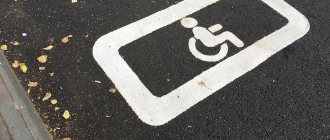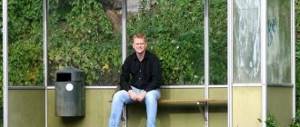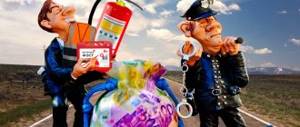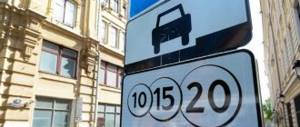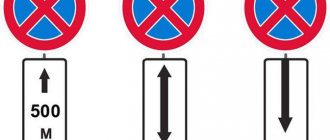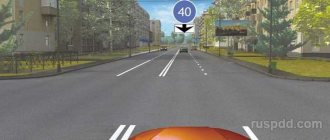Types of liability for road accidents
According to the Legislation, the culprit faces punishment for an accident in the form of:
1, Civil liability . It is also material, which is compensated by the culprit to the victim in any case. This is due to the fact that material losses during any road accident are inevitable, and here we can mention both material damage and moral and physical damage. Additionally, other compensation may be paid in favor of the victim, related, for example, to the lost earnings of the injured party.
2. Administrative responsibility . It is awarded to the culprit of an accident if the victims received only minor injuries, but severe injuries or death were avoided. For this type of liability, there are several types of punishment:
- deprivation of a driver's license for up to 3 years;
- administrative arrest for up to 15 days;
- community service up to 200 hours;
- administrative fine - the amount depends on the type of violation.
3. Criminal liability . It is used in cases where the actions of the person responsible for the accident resulted in severe bodily injury to the victim or death. For such situations, severe methods of punishment are used:
- forced labor for up to 5 years;
- restriction of freedom for up to 3 years - restriction of movement and freedom in certain actions;
- imprisonment for up to 9 years - imprisonment;
- deprivation of rights for up to 3 years.
Features of application:
- Criminal and administrative penalties are strictly individual and only apply to the person responsible for the accident.
- Civil liability applies to all persons. This condition applies in cases where the car was transferred to the person responsible for the accident by proxy or is owned by a legal entity.
The culprit can be punished for an accident with either only civil or combined liability.
Administrative punishment for the culprit for actions in an accident
According to the Code of Administrative Offences, additional penalties are applied to the culprit of a traffic accident; for behavior after an accident, some of the most severe are:
- fled the scene - administrative arrest for 15 days or deprivation of rights from 12 to 18 months;
- giving a bribe to a traffic police officer - from a fine of 15-30 times the bribe received to a fine of 70 times the bribe received and imprisonment for 7-12 years;
- violation of the rules of leaving a vehicle at the scene of an accident without changes until the arrival of a traffic police officer - an administrative fine of 1000 rubles;
- failure to provide first aid to victims - from a fine of less than 40 thousand rubles to imprisonment for up to 1 year;
- committing an accident while under the influence of alcohol, psychotropic or drugs is punishable by a fine of up to 30,000 rubles and deprivation of a driver’s license for 2 years.
Driver actions in various extreme situations
In this article we will analyze the actions of the driver in various extreme situations. No one is immune from such cases, and it is important at a crucial moment not to get confused and have a clear idea of how to act in the current situation.
Car falling into water
The car may end up in the water as a result of a collision on a bridge, falling into a ditch or into a swamp with water.
In some accidents, neither the driver nor the passengers have time to open the doors, but the car can remain afloat for some time. In this case, you need to free yourself from the seat belts and knock out the rear window with a pry bar or hammer. If this is not possible, then put your feet on the rear window and squeeze it out. Then leave the car.
If the car is immersed in water, try to remain cool and remove your seat belts. Women and children are the first to leave the car. Try to move to the rear part of the cabin, because the “front” heavy from the engine will force the car to sink faster, burying its nose, as a result of which an “air bag” will form at the top point of the cabin, located at its rear. Remembering that there will be enough air in the car for 2-3 minutes, get rid of excess clothing, grab documents and money, squeeze out the rear window, or try to open the door and leave the car. It is best to do this at a time when the interior is at least half filled with water. You should turn on the headlights and interior lighting - this will help the rescue service find the car.
A stone or other object hitting the windshield
A foreign object hitting the windshield is always unexpected for the driver. At this moment, experience and maintaining composure are needed more than ever. Slowly brake without changing direction, get out of the car, inspect the damage and then make a decision.
If glass fragments get into the car, you need to very smoothly start braking, pull over to the side of the road, and provide first aid, especially in cases of facial and head injuries.
If you are afraid that small fragments of glass have fallen into the opening of the heating system, do not turn it on under any circumstances. Once back in the garage or parking area, open the heating system and remove any debris, using a vacuum cleaner if necessary.
Engine failure at a railway crossing
As the train approached, the engine stopped. In this case, the main thing is not to get confused and leave the car in order to save the lives of yourself and the passengers.
The driver must give a command to the passengers in a loud voice: “Unfasten your seat belts, get out of the car!” At the same time, the driver does the same, opens the door slightly, engages the starter and third gear, and moves through the crossing. If the train is far away, he asks passengers to push the car.
Actions of the driver in icy conditions in an extreme situation
Most often, extreme situations arise during sudden braking on “bald” tires or in icy conditions. What should you do if you skid in these cases?
The most important thing, knowing the time of year and the condition of the tires, is not to brake sharply, engage a lower gear and turn the steering wheel in the opposite direction from the skid.
Do not forget to give the command to the passengers to group and hold on to the handrails: the subconscious must work.
If in winter, when preparing your car for a trip, you do not clear the snow from the roof of the car, then during emergency braking, the melted snow may slide onto the windshield and block your view.
Entering oncoming traffic
As a rule, most often extreme situations arise in connection with driving into oncoming traffic. There are many reasons for this. Let's look at some of them. Overtaking was discussed here. Let's look at what other reasons exist.
Car malfunction on the road
Stop the car, look around, try to fix the problem, or try to tow the vehicle.
Gas pedal jammed
— most likely, one of the springs that returns the pedal to the neutral position has failed.
Pry the pedal with your foot and return it to the top position. After looking around, turn off the engine, turn right and, slowing down, drive up to the edge of the road. Then try to repair the gas pedal
Car brake failure.
The main reasons may be: wet brake pads, broken brake hose, faulty master cylinder, etc.
What and how to do in these cases:
- Use a shift to a lower gear by pumping the brake pedal.
- Apply the handbrake by moving the lever smoothly and holding the steering wheel firmly.
- Downshift:
- take your foot off the gas pedal;
- depress the clutch pedal;
- move the gear lever to neutral position;
- release the clutch;
- rev the engine: press the gas pedal and immediately release it;
- depress the clutch pedal;
- change to a lower gear;
- release the clutch.
Repeat the steps until you are in first gear.
The brake pedal has fallen.
Immediately switch to a lower gear, usually second gear, then apply the brakes with a few pumps of the brake pedal (do not forget - the car is equipped with a 2-circuit brake system).
If the hand brake fails
on a climb, use the right foot braking technique while simultaneously pressing the gas pedal:
- place your right foot with your toe on the gas pedal and your heel on the brake pedal;
- Having released the clutch with your left foot, begin to release the pressure of the heel of your right foot on the brake, while increasing the pressure on the gas pedal. Try changing to a lower gear (first to second and then to first) and turn off the engine without touching the clutch.
Fines for road accidents
Let's consider the most frequent and severe fines for road accidents provided for violators. The amounts of all fines can be found in the table of fines.
Provoking an emergency
Fine for creating an emergency on the road (Article 12.14 of the Code of Administrative Offenses of the Russian Federation) - warning or fine of 500 rubles
Road accident with victims
- minor harm to health: fine 2500 - 5000 rubles;
- average harm to health: fine 25,000 - 30,000 rubles and deprivation of rights for 12 - 18 months;
- serious harm to health: from a fine of 2,500 rubles to, deprivation of a driver’s license and imprisonment for up to 7 years.
Failure to keep distance
The fine for failure to keep the distance is 1,500 rubles (Article 12.15 of the Code of Administrative Offenses of the Russian Federation).
Failure to comply with road markings and traffic signs
Amount of punishment for ignoring traffic rules when driving along the road lane and making turns, U-turns and other maneuvers:
- driving along the dividing marking line - a fine of 500 rubles;
- failure to turn on the turn signal when changing lanes or other maneuver - a fine of 500 rubles;
- making a turn or U-turn from a lane not intended for this maneuver - a fine of 1,500 rubles;
- driving in a bus lane - fine 1500 - 3000 rubles;
- driving on bicycle and pedestrian paths - fine 2,500 rubles;
- overtaking a vehicle through a continuous road - a fine of 5,000 rubles or deprivation of rights for up to 6 months.
Creating a situation that led to an accident
In the practice of the traffic police and from the experience of motorists, there are many cases where an accident was caused by a traffic participant who himself avoided it:
- At the intersection, car L turned right when the traffic light turned green. And he saw that D was coming towards him, having jumped the red light. L swerved sharply to the right and applied the brakes to avoid hitting D. As a result, he drove into the side of car Z, which was moving in the right lane. And the car following him flew into him.
Obviously, the accident was caused by D. But driver L was named guilty, since the inspector considered that he should have taken the blow from D, and not created an emergency situation for other cars. This decision should be appealed in court, since there is a good chance of punishing the real provocateur of the accident.
- Car V is driving along a highway at a speed limit of 80 km/h. He is overtaken by car W, and in the area of effect of a sign prohibiting this maneuver. A third car comes towards him from around the nearest bend. To avoid a collision with him and the truck repairing the roadway, service W abruptly changes to lane V directly in front of him and just as suddenly brakes. Driver V also tries to stop.
But since this happens at a significant speed, and the motorist does not have enough experience, the vehicle flies into a ditch. And W remains intact. In this situation, it would be fair and legal to find his driver guilty. After all, he violated traffic rules, used dangerous driving, which led to an accident.
More on AutoLex.Net:
Main and secondary causes of road accidents
- Car L is driving along the main road. At the intersection, car D, moving along a secondary path, does not give way to him. Wanting to avoid a collision, L swerves onto the sidewalk and crashes into a tree. And D, who provoked this situation, drives on without slowing down. His driver was found guilty by the court.
But the motorist who provoked the incident stubbornly did not want to agree with this and filed a statement with a higher authority. He believed that he had not participated in the accident at all, and there was nothing to judge him for. In addition, Driver D was charged with leaving the scene of an accident, which he also did not agree to. And yet, another judge confirmed the previous decision on both guilt and the need for punishment for escape.
- Car N jumps through an intersection at a red traffic light. Car Z, which is moving at a green light, brakes sharply, trying to avoid a collision with the intruder. As a result, the following car F crashes into him. In most cases, its driver is found guilty. Although in fact the accident was organized by the one who was driving N. But to prove this, driver F will need a lot of effort and a good lawyer.
